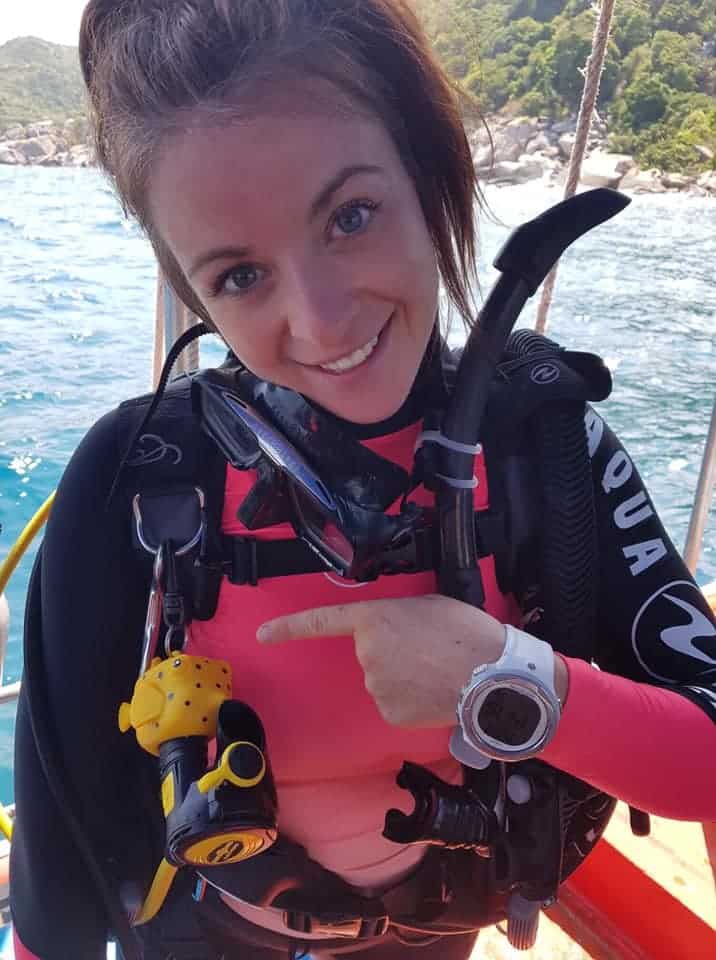A diver-down flag is red with a white diagonal stripe running down (from the upper left to the bottom right).
This imperative symbol is an internationally recognized flag that could be life-saving.
Check out a picture of a diver down flag below:
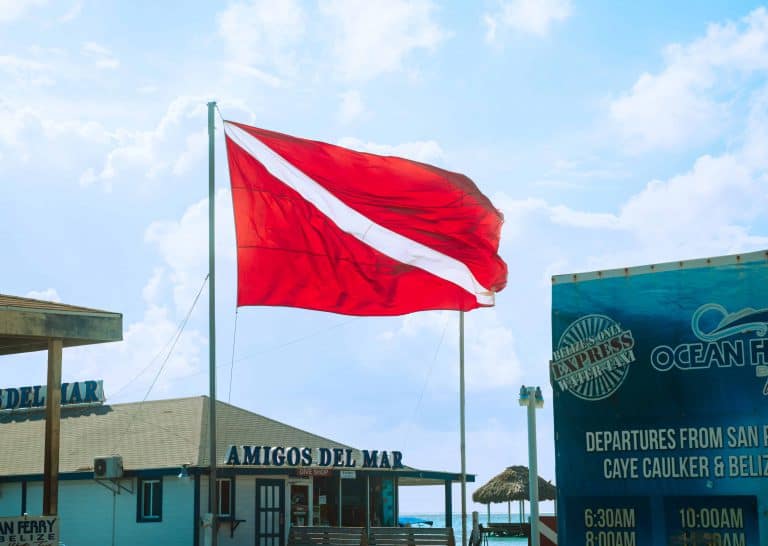
Negligence of diver down flag rules can result in fatal consequences and that’s why it’s important to read up on the distance, rules, what it looks like and the difference between flags.
Table of Contents
What is a Diver Down Flag?
A diver down flag is a warning signal used to indicate that there’s a submerged diver.
The red flag indicates to other boats that divers are below the surface and are in the region. This will help boat traffic take care when driving, ensuring they stay a safe distance and speed.
It’s important for scuba divers and captains to understand the meaning of different flags. Read on as I describe the different types of scuba flags and what you should do if you see one.
What are the Two Types of Diver Down Flags?
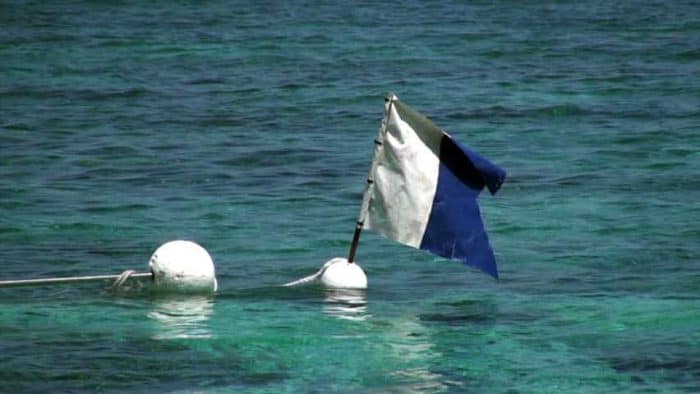
When you go diving, you will have a choice between an alpha dive flag, which is blue and white, or a red and white flag (diver down). The red and white flag, oddly, doesn’t have a formal name!
The alpha flag is used to generally warn people that diving is in progress, and that you are deep below the waves. The alpha flag is based around maritime flag standards, meaning that any qualified boat users will recognise a blue and white diver flag as clear indication they need to keep back at a specific speed and distance. The alpha flag is mainly used to prevent boat collisions.
Alpha Flag vs Dive Flag


The red and white diver flag is similar to the alpha flag in some ways, but it’s generally used as a dive flag when more sapace is required. For example, the red and white diver flag is used when you are starting to approach the surface, or if you have a particularly wide dive site demand. This, unlike the alpha flag, tends to be used more to protect the divers than the boats. This is probably the most commonly used diver down flag.
In any case, dive flags are recognised internationally, and there are specific laws and regulations which may differ from place to place. Whether you are diving or are sailing a boat close to a dive flag, it’s important to make sure you abide by the rules that the flag sets out. In some countries, the use of both flags are required by law.
What Do You Do if You See a Diver Down Flag?
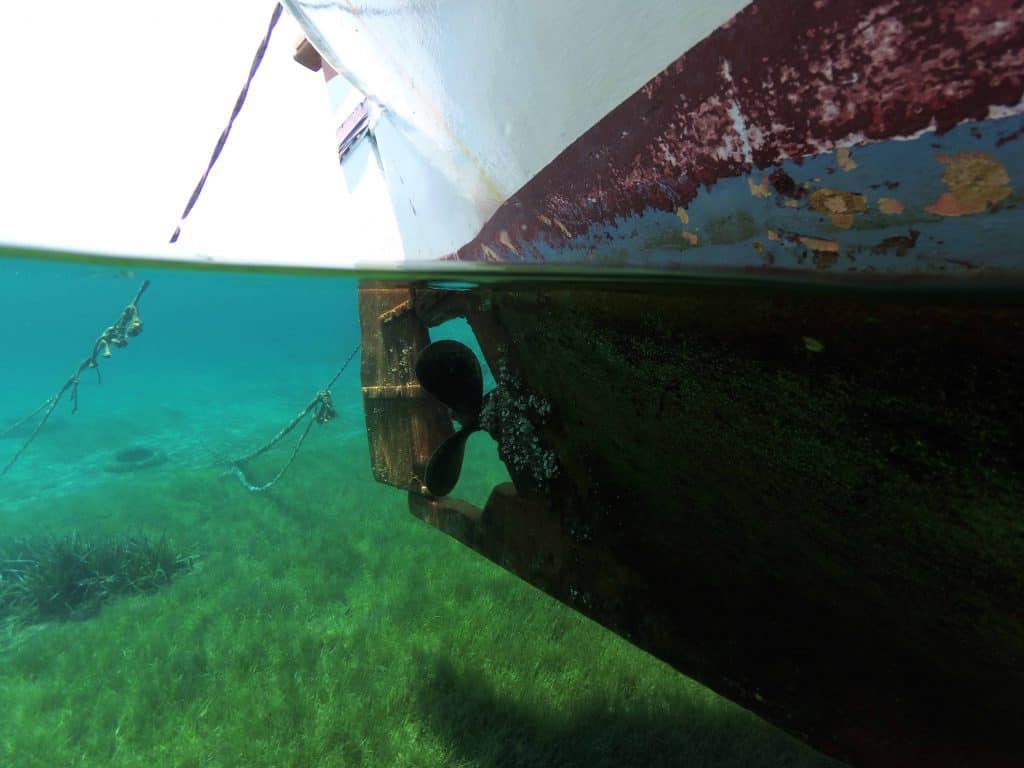
If you see a diver down flag in the water, you will need to make sure that your boat is travelling at a safe speed and distance away from the flag and surrounding site. This goes for both the diver flag as well as the red and white dive flag.
If you are driving a boat, you must keep 300 feet (90 metres) away from any diver down flag or dive flag you spot. This applies to open water – if you spot a dive flag or multiple dive flags in smaller channels, you may be able to keep up to 100 feet or 30 metres away. However, regardless of whether you see an alpha flag or not, it’s essential you keep well clear.
Divers, too, should be keeping well within the diver down flag they set. The rules proposed by the Divers Alert Network (DAN) says that divers should look to ascend within 45 metres of the flag.
Safety First!
Communication between boats and divers is essential. The dive boat should establish clear communication channels with all divers before a flag is set. As usual, all drivers and divers should ensure they follow precise safety planning and procedures.
What’s more, there should always be a safety procedure put in place for emergencies. Both dive boat personnel and divers in the site should keep vigilant. External boats should also know what the standard dive flags look like and should be careful to give those scuba diving in the area as much space and respect as they need.
Not paying attention to a diver flag, whether it is an alpha flag or other divers’ flags, could result in boating collisions, injuries, or even fatalities. One of the biggest risks to snorkelers in general is the risk of them hitting boats without due caution. Therefore, it is in everyone’s interests to keep vigilant and to always know what each diver down flag is in place to warn against.
What Flag Indicates Scuba Diving or Snorkeling Activity?
Both the red and white flag and the blue and white alpha flag will indicate that scuba diving and/or snorkelling are occurring in the local vicinity.
Diver down flag colours can differ when it comes to how close a diver is to the surface. Boat traffic must make themselves aware of the different diving flags available, and what they need to do to avoid dive boat collisions and the like.
What’s more, divers and their dive boat personnel must always make sure to securely hoist the relevant dive flag on their launching boat at all times. Using the right flag – or even a diver down flag at all – is crucial not only for the safety of divers, but also for the safety of boat traffic in the area.
The alpha flag tends to be more commonly used that the red and white flags you might otherwise see in open water. However, if you are going diving, always make sure to use both types of dive flags.
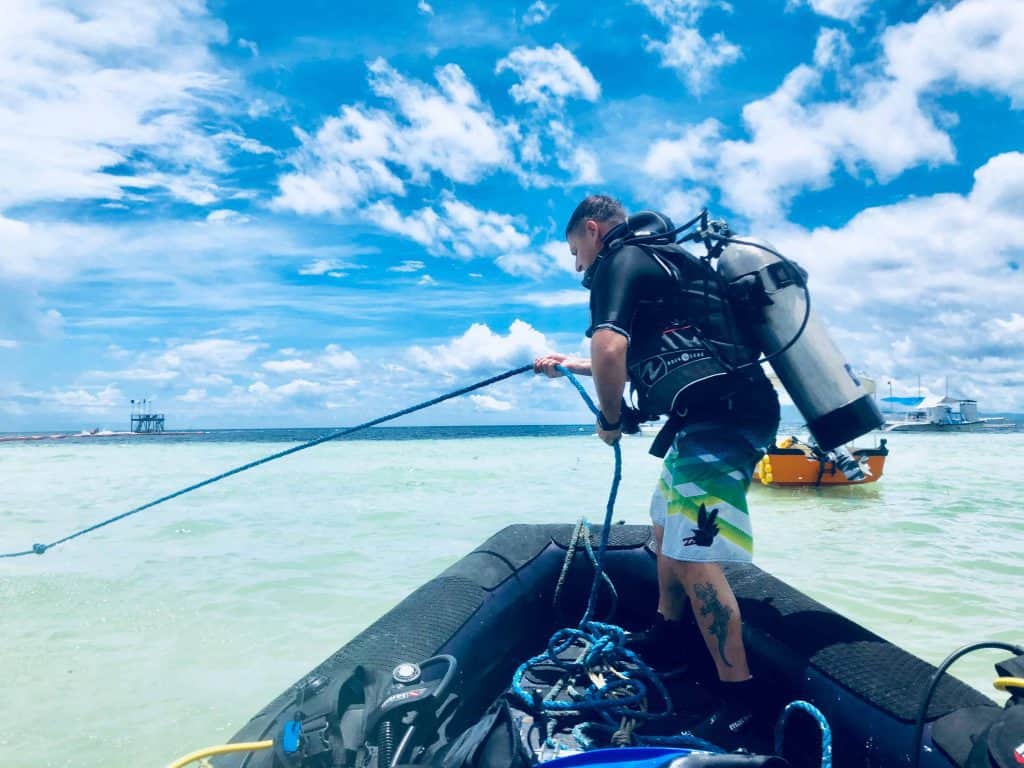
Yes – a dive flag is just as important for snorkelers as it is for deeper divers. That’s because snorkelers may actually be more at risk than scuba divers, who go in much deeper. An in-water mobile buoy or floatation device with one of the flags attached is a sensible option for snorkelers – this way it can be moved with the group.
What is a DSMB?
You may dive in an area where flags are not required by law, but divers must carry a delayed surface marker buoy or DSMB. A DSMB is launched by a diver as they approach the surface, normally just before the safety stop. This allows others to be alerted of your ascent. When I was working as a dive instructor in Thailand, flags were not used, but all dive leaders had to use a DSMB. It is still like a flag, warning boats to stay well clear as divers are ascending. If you are an Open Water Diver and want to learn more about this, check out the PADI Delayed Surface Marker Buoy Diver specialty course.
Find out more on what surface marker buoy are and how to use them.
Now you know the difference between the alpha dive flag and red and white dive flags, it’s time to make sure you use them correctly. Knowing what these flags look like is only half the battle. Use dive flags to show when a site is in use, and never remove a diver flag until you and your buddies are clear of the water.
How Big Should a Dive Flag Be?
A diver down flag should be 20 by 24 inches when flown from a vessel.
From a buoy, it should be 12 inches by 12 inches.
Diver Down Flag Distance
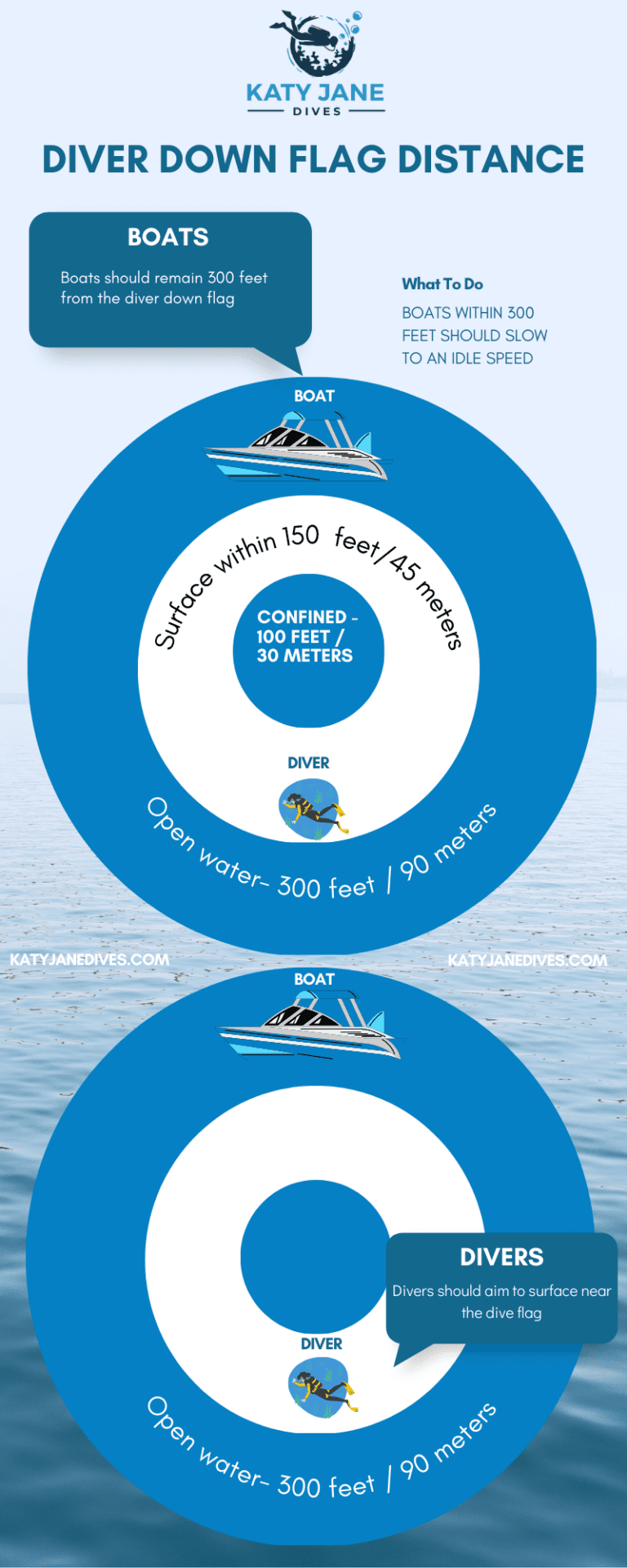
Scuba divers should ascend within 45 metres of the flag and boaters should remain a distance of 50 metres.
Any boats within 300 feet should stay at this range at an idle speed.
Diver Down Flag for Snorkeling
The diver down flag for snorkelers is a red flag with a white diagonal stripe – it’s the same flag used for divers. Snorkelers can also use the Alpha flag, another diver down flag.
Divers in the Water Flag for the Navy
Navy divers use the same dive flag as all divers, the internationally recognised symbol is a red flag with a white diagonal stripe, as seen below.
FAQs
The aim is to make the diver down flag visible to boaters in the distance, place the flag at the highest point of the vessel. You can use a pole or another option is to use a buoy.
The diver flag is used worldwide, the international flag is the same in each country.

